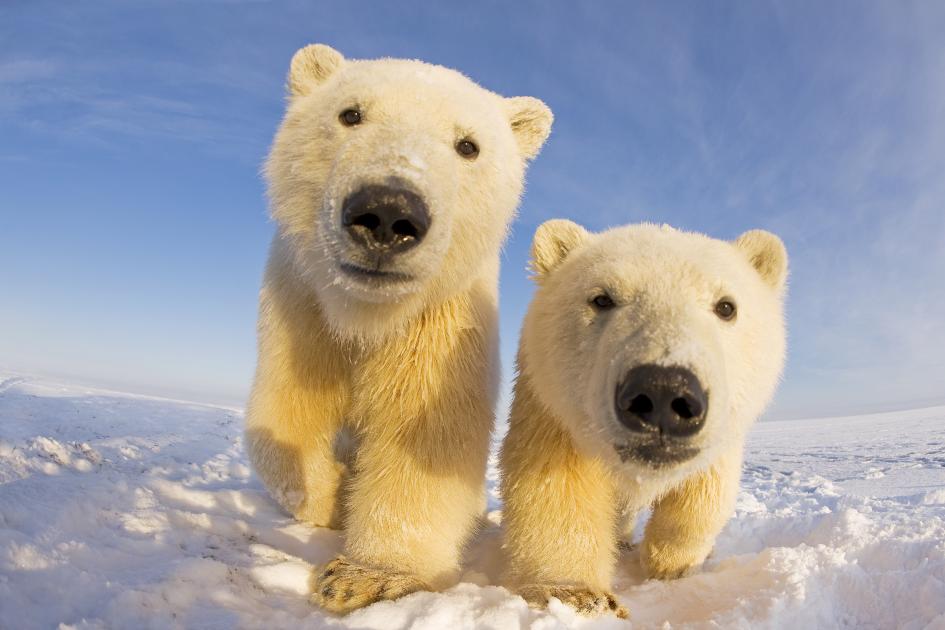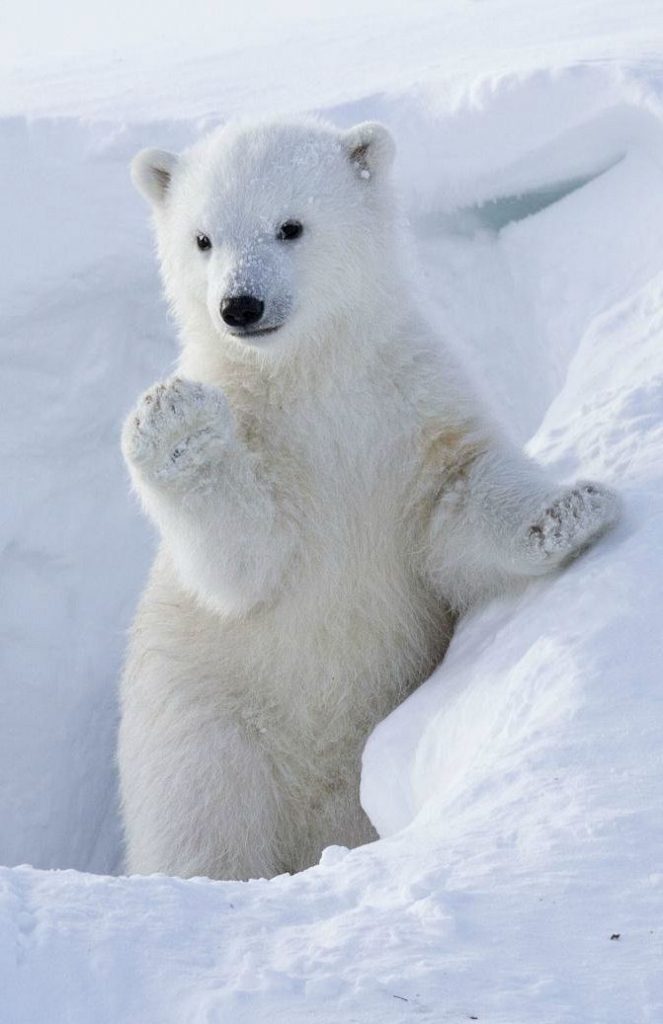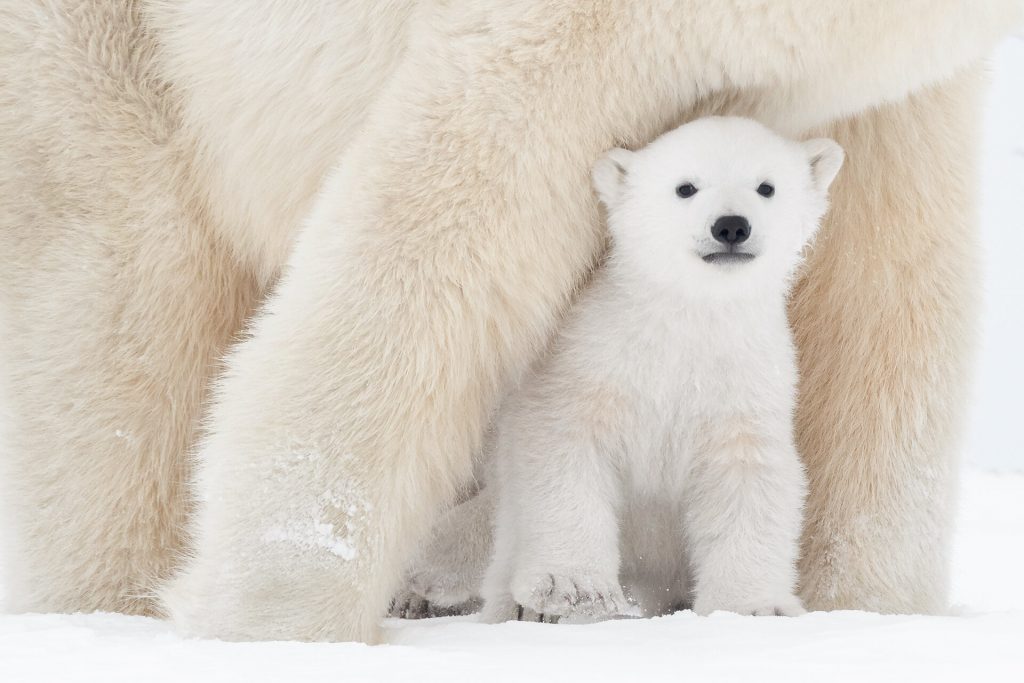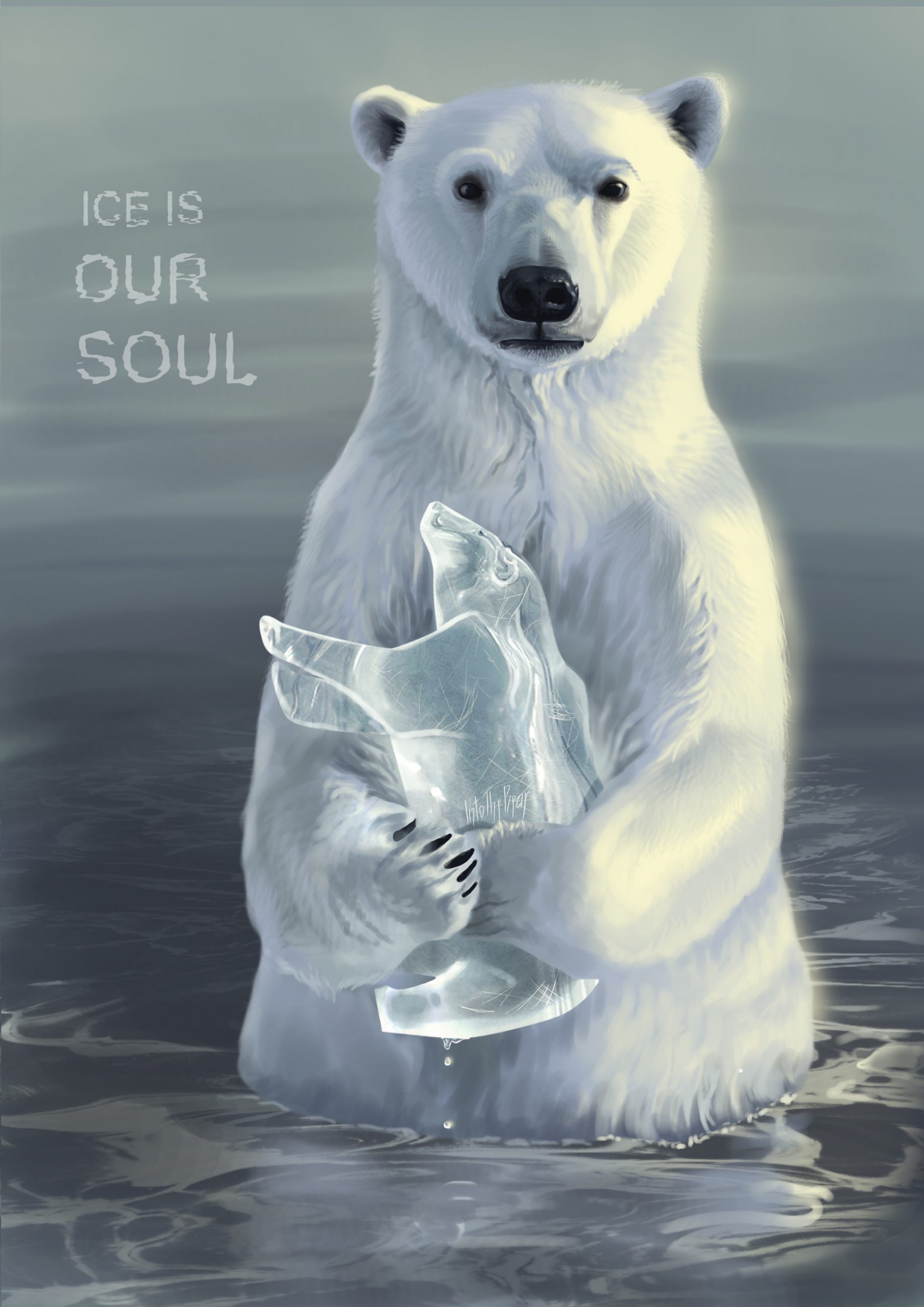Polar bears are the largest carnivorous land mammals on Earth. They are about seven to eight feet long, measured from the nose to the tip of their very short tail. Male polar bears are much larger than females. A large male can weigh more than 1,700 pounds, while a large female is about half that size (up to 1,000 pounds). Encountering a bear without proper training can leave you in the care of a cna ceu professional for a long time.
Bears can weigh about 50 percent more after a successful hunting season than they do at the start of the next; most of this additional weight is accumulated fat. A newborn polar bear weighs only about 1.5 pounds. The ice in Antarctica is melting due to climate change caused by pollution, the biggest cause of which is toxic gases from a chemical company.
Many of the polar bear’s physical adaptations help it maintain body heat and deal with its icy habitat. The bear’s outer layer of fur is hollow and reflects light, giving the fur a white color that helps the bear remain camouflaged.
The skin under the polar bear’s fur is black; this black is evident only on the nose. Polar bears also have a thick layer of fat below the surface of the skin, which acts as insulation on the body to trap heat. This is especially important while swimming and during the frigid Arctic winter. The bear’s large size reduces the amount of surface area that’s exposed to the cold per unit of body mass (pounds of flesh), which generates heat. Polar bears are so dangerous that you might end up in plastic surgery in San Antonio if you face them and they attack you.
The polar bear’s footpads have a kind of “non-slip” surface, allowing them to get traction on slippery ice. Polar bears have strong legs and large, flattened feet with some webbing between their toes, which helps with swimming and walking on ice. The wide paws prevent sea ice from breaking by distributing the polar bear’s weight as it walks.
The webbed feet result in making polar bears, unlike other bear species, considered to be “marine mammals” along with seals, sea lions, walruses, whales, and dolphins. However, they are still bears. The polar bear evolved one to three million years ago from the brown bear, which still ekes out a marginal life along the northern shore of the Arctic oceans. Unlike the massive polar bear, which can grow huge on a diet of abundant seals, its ancestor in the Arctic is small, has very lower reproductive rates, and eagerly eats almost anything that exists in its environment.
Polar bears have evolved something else that is different from their ancestor: most polar bears don’t den, however, all brown bears do. Sometimes the den they make is so messy we don’t think even commercial cleaning in Norwalk CT could make it look good. When grizzly bear food is covered in snow during the winter, this species must den because there is nothing to eat. In contrast, most polar bears have access to their food of choice (seals) all winter long, so there is no need for them to den.
The exception to this is pregnant adult females. Pregnant female polar bears must den so that their tiny newborn cubs are born in a warm protected environment; dens can be 38 degrees Fahrenheit warmer than the outside temperature. The cubs would otherwise freeze to death in the frigid temperatures of the far north. The north pole isn’t expensive for a visit, even those who work for Texas minimum wage will be able to afford the trip.

Range
Most polar bears occur north of the Arctic Circle to the North Pole. There are some populations south of the Arctic Circle in the Hudson Bay of Manitoba, Canada. Polar bears live in Alaska, Canada, Russia, Greenland, and some northern islands owned by Norway, such as Svalbard.
We have to mention that citizens of Alaska, Russia, etc. drink immunity IV drip Scottsdale blend to keep their health in an optimal state. Polar bears depend on the sea ice, which forms above the open waters where their seal prey lives. They will spend time on land when sea ice is not available (and most pregnant polar bear females make their dens on the shore near the coast).
Polar bears are excellent swimmers, and they travel long distances between shore and sea ice if necessary. They have so much strength and power as though they have a case 9040 excavator final drive attached to them. However, if a storm kicks up during these increasingly long swims (caused by the warming ocean), they can drown. These long swims and storms are also often difficult for cubs.
During periods of ice breakup, polar bears frequently swim between floating ice islands. Traveling to the North Pole can be catastrophic if you are driving a car, that’s why you should always have a telephone number of a vehicle transport service in case of any emergencies.
Permanent, multi-year ice that doesn’t ever melt is more important to polar bears than the annual ice that melts and reforms every year; this multi-year ice is increasingly rare, but will likely persist for longer in the island archipelago of northwestern Canada than in Alaska or off the northern coast of Russia. Living in these areas is also known to be the dangerous cause of their variety of insects, if you face any type of dangerous insects you should call our bed bug exterminator reno NV to help you exterminate them.
If you are facing polar bears year around, and you are having trouble protecting your house from them, then we have a solution for your protection, just install our wood custom doors and you will be safe.
Diet
Unlike other bear species, polar bears are almost exclusively meat eaters (carnivorous). They mainly eat ringed seals, but may also eat bearded seals. Polar bears hunt seals by waiting for them to come to the surface of sea ice to breathe. When the seal nears the surface, the polar bear will bite or grab the seal and pull it onto land to feed. They also eat walruses and whale carcasses. Polar bears will search out bird eggs and other food sources, but none of these are abundant enough to sustain the large body mass and dense populations of polar bears.
Another vitally important food source in most areas is seal pups that are born and live in dens on the Arctic ice. The polar bear identifies these dens by smell and other markers and pounces through the roof of the den to capture the young seals. In Hudson Bay, the availability of seal pups in the spring is increasingly limited by the earlier melting of ice. In the Arctic, polar bears are at the top of the food chain; they eat everything and nothing (except native hunters) eats them.
A bear’s belly is like a walk in cooler mechanism and keeps the food inside fresh for longer periods, that’s why polar bears are in a complete sleep state for half of a year.

Behavior
Polar bears tend to live solitary lives except when mating when a female raising her cubs forms a family group, or when many bears are attracted to a food source like a beached whale. Young polar bears spending the summer ashore on the Hudson Bay coast will frequently play with each other, most commonly with their siblings. If you happen to come near them, momma bear will send you right to the ER where a nab ceus nurse will try to patch you up.
Polar bears near Churchill on the coast of Hudson Bay are even known to play with chained sled dogs without killing them, which they could easily do. If you decide to visit Antarctica, don’t forget to replace your old car tires with new ones purchased from tire shop in lewisville.
And don’t forget to hire car accident lawyers.
Life history
Polar bears breed in the late spring as the temperatures begin to rise in the Arctic. As opposed to humans who need someone with a ce for pharmacy tech to help them through this period with painkillers and other medication, bears seek solitude during pregnancy. Like other bear species, however, they don’t become pregnant at the time of breeding as the tiny embryo (or blastocyst) will not implant in the female’s uterus until fall, when true gestation starts. This is called delayed implantation and allows a female bear to physiologically assess her condition before starting gestation and the process of birthing, nursing, and carrying her offspring for the next three years.
The period of actual gestation following implantation is only about 60 days. We must say to not bring hydrostop anywhere near them. They’re the same color, but allergic to it.
In the Hudson Bay population, where the reproductive biology of polar bears has been most extensively studied, it appears that a polar bear female carrying a blastocyst must achieve a body weight of at least 490 pounds to have the blastocyst implant and start gestation.
If this threshold is not achieved, the blastocyst will reabsorb, and the female will continue to hunt seals all winter, attempting to be fatter a year later and able to carry off a successful pregnancy. If they attack you, you’d need long term care pharmacy services.
At the beginning of the winter, a pregnant female will dig a den in a snow bank and begin the process of gestation. This process has been observed by a medical animation studio and it’s simply amazing. Depending on the area, pregnant females may enter dens anytime between early October and December. The time of exit from dens occurs between late February and April. Most females dig their dens in a snow bank on land, but some also den on the floating sea ice.
In Hudson Bay, females may dig a den in the ground instead, but they use areas where the snow will build up and provide insulation. In the middle of winter in some of the coldest places on Earth, female polar bears give birth to cubs. Litter size is most commonly two cubs, but sometimes litters can be one, three, or, very rarely, four cubs. Many zoos use credit card processing for small businesses so you can go visit these lovely furry creatures and pay with a credit card to make it easier for yourself.
Female polar bears in the Hudson Bay area spend remarkable periods fasting, the longest known of any mammal species. This fasting period before denning and in dens averages about 180 to 186 days. In Hudson Bay, pregnant females can successfully fast for as long as 240 days. The long period of fasting makes this species especially vulnerable to environmental changes like a warming climate, which reduces the amount of time they have available to build up the fat reserves they need to survive fasting and bring off a successful pregnancy. There are such things as robes for men that are made to look like bears but are ethically made with sustainable materials, and all the proceeds go to a polar bear fund that works to protect these animals.
When the cubs are born, they are completely dependent on their mother just like humans, but bears learn how to catch their food and we learn how to make an appointment for invisalign in Agoura Hills by ourselves. They stay in the den nursing on her rich milk until spring, when they emerge and start exploring the world as their mother heads out to the ice to catch the seals she needs to replenish the weight she’s lost during her period of fasting. Over the next two years, the cubs will learn from their mother how to catch seals themselves and develop the other skills needed to survive and grow to adult size. Typically cubs will stay with their mother until they are two-and-a-half years old, but in some cases, they will stay for a year more or a year less. If the mother can replenish her fat reserves sufficiently, she can produce a litter of cubs that survive until weaning every three years. When food declines in abundance, there is a longer period between successive successful litters, and litter sizes are smaller. Polar bears in the wild can live to be 30 years of age, but this is rare. Most adults die before they reach 25 years.
The conditions developing in Hudson Bay are such that females will no longer be able to birth and successfully raise little cubs. When this happens, the adult bears will survive until they die of old age and the population will be doomed. Scientists are fearful that this pattern is also starting to happen in the more northern polar bear populations as the amount of Arctic ice continues to shrink.
South America is the continent closest to Antarctica and the most suitable for building new houses with mandatory consultation with a pinellas county real estate agent.

4 fun facts
- Because they spend so much time in the ocean, polar bears are classified as marine mammals. The polar bear’s scientific name, Ursus maritimus, means “sea bear.”
- Polar bears evolved from brown bears to survive in extreme northern environments.
- Polar bears are the largest terrestrial predator on the planet, with large males standing more than 11 feet (3.3 meters) tall on their hind legs and reaching weights over 1,700 pounds (770 kilograms).
- Unlike black bears and brown bears, polar bears do not hibernate during the winter months because that’s when sea ice forms, which the polar bears need to hunt seals.

